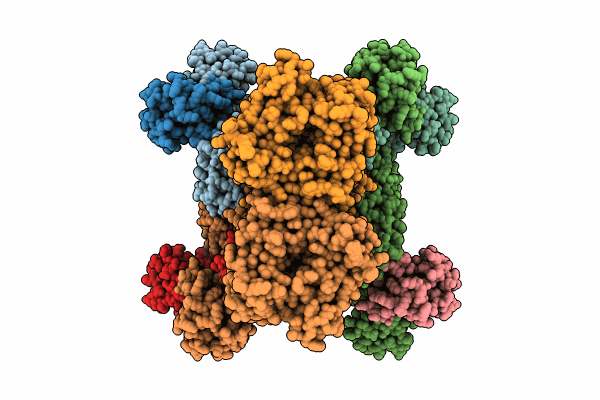
Deposition Date
2023-12-27
Release Date
2024-04-03
Last Version Date
2024-05-22
Entry Detail
PDB ID:
8XMH
Keywords:
Title:
Potassium transporter KtrAB from Bacillus subtilis in ATP-bound state with addition of EDTA and EGTA, vertical C2 symmetry axis
Biological Source:
Source Organism:
Bacillus subtilis (Taxon ID: 1423)
Host Organism:
Method Details:
Experimental Method:
Resolution:
2.85 Å
Aggregation State:
PARTICLE
Reconstruction Method:
SINGLE PARTICLE


